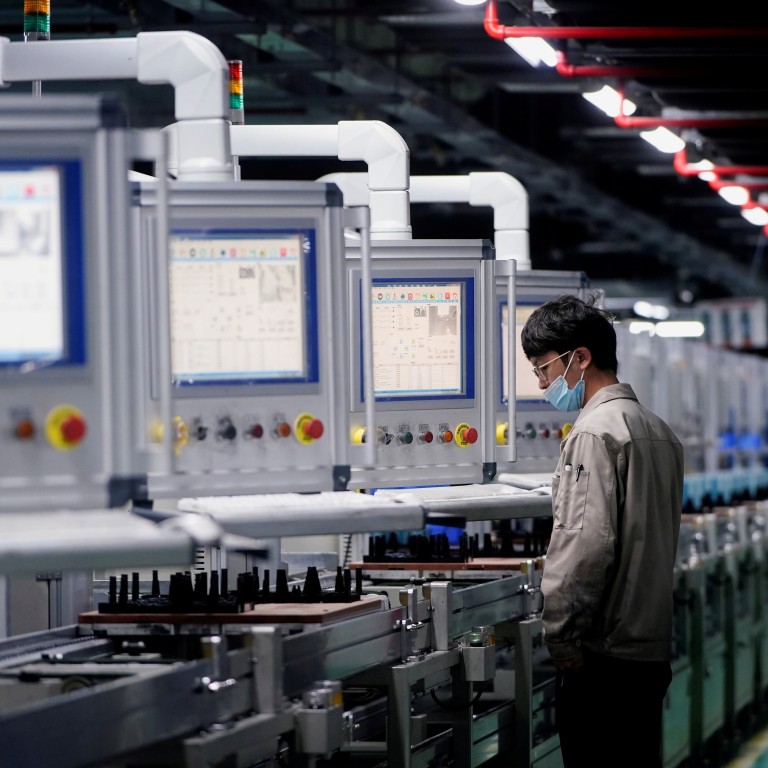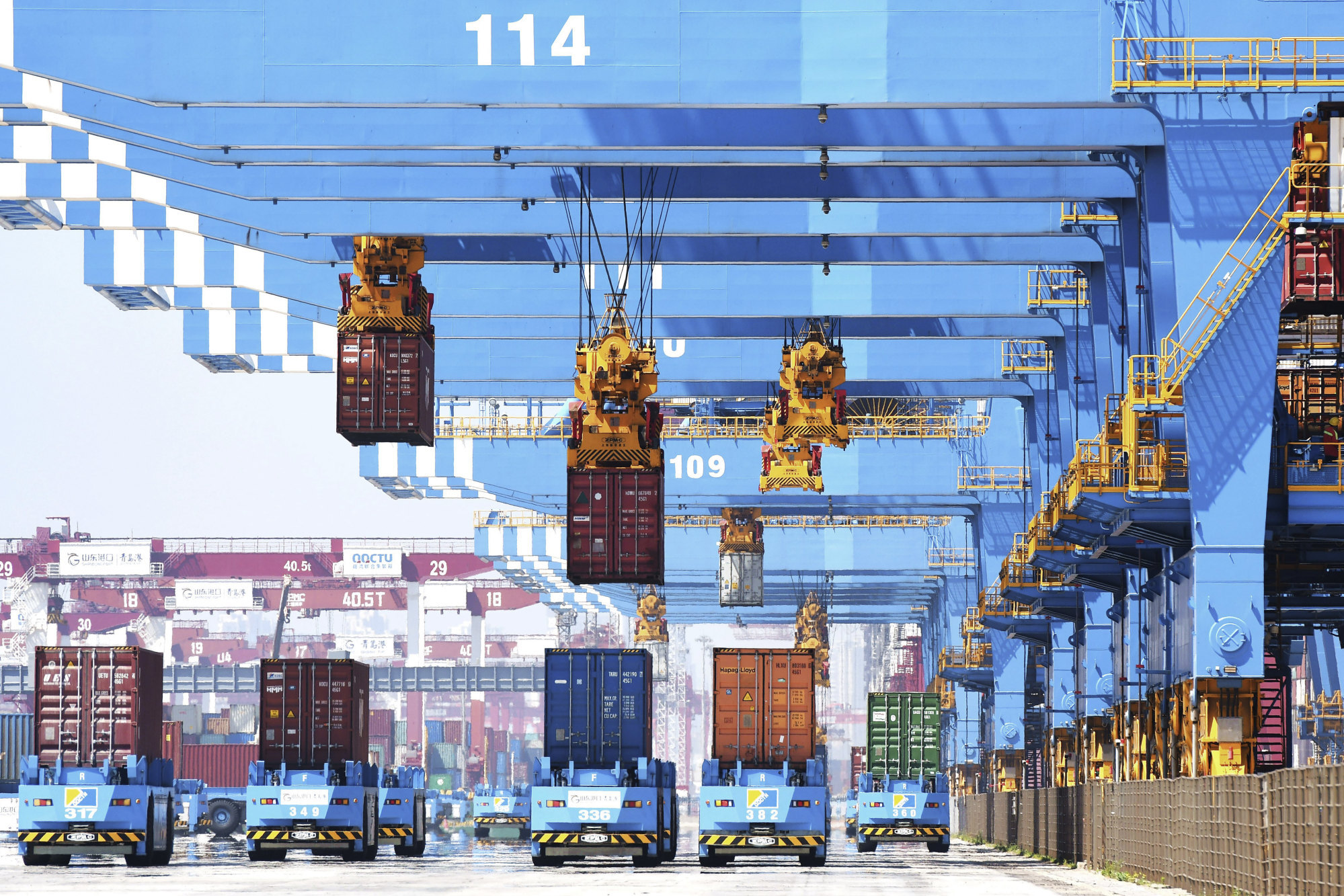
Why China is still the world’s factory, only upgraded
- Despite rising costs, a US trade war and the Covid-19 outbreak, China’s resilient supply chain has prevailed and enabled its economy to move up the value chain
- China remains an export powerhouse reshaping the landscape of global trade
Successive US tariff increases on Chinese products had the anticipated effect. US-bound exports from China fell by 17 per cent from 2017 to end-2019, resulting in a sharp drop in China’s market share in the world’s largest consumer market.

Second, export diversion helped. By selling inputs to third countries for assembly before the final products were shipped to the US, China was able to circumvent some trade levies, while still retaining value in the final products sold.
A once-in-a-generation public health crisis triggered by Covid-19 soon erupted. This, combined with Beijing’s draconian response to the coronavirus, almost paralysed the economy.
With production grinding to a halt and exports collapsing, many thought the pandemic could trigger a mass exodus of supply chains out of China, which would spell the end of the country’s reign over global trade. However, what transpired thereafter came as a surprise.
Asia’s supply chains are shifting, not shrivelling
On the one hand, China’s forceful response was quite effective in containing the outbreak, paving the way for a swift resumption of production and exports. On the other, the rapid spread of the virus to the rest of the world wreaked havoc on global production, bringing trade to its knees.

The effective defence against the trade war and Covid-19 reflects the resilience of China’s supply-chain ecosystem. This resilience, as our research suggests, is no longer built on cost competitiveness as China’s economy matures, and the demographic cycle turns.
Instead, it is a result of an accelerated upgrading of China’s domestic production system, which enables its economy to move up the value chain.
Take China’s involvement in iPhone’s production as an example. From managing only one part of the iPhone 3G’s production – final assembly – in 2008, China went on to contribute 11 items to the iPhone X’s production in 2018.
Its share in iPhone’s total billing cost and retail value increased seven-to-eight-fold over 10 years.
How supply chain politics could mean misery for thousands of Chinese workers
China’s emergence as an export powerhouse also reshaped the landscape of global trade. Our study shows that developed economies – led by Japan and the US – have lost significant market share to China in the medium to highly skilled export segments.
On the flipside, China has lost market share in some low-skilled and labour-intensive sectors in recent years – due to rising wage costs – to emerging markets such as Vietnam.
However, China has retained many critical supply chains locally, making it necessary for others to cooperate with it, and so allowing it expand, instead of relocating, its production network beyond its borders. This strategy has helped China to establish an inclusive and enduring production ecosystem, which may prolong its days as the “world’s factory”.
Aidan Yao is senior emerging Asia economist at AXA Investment Managers

